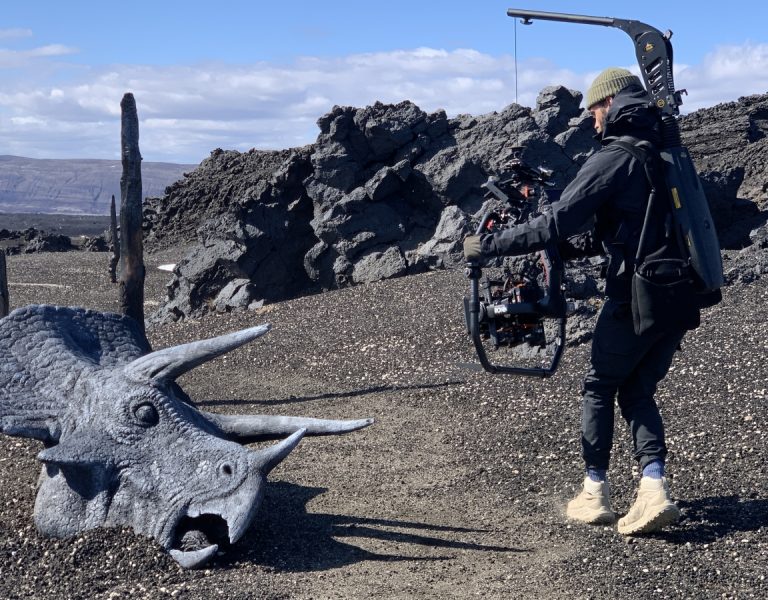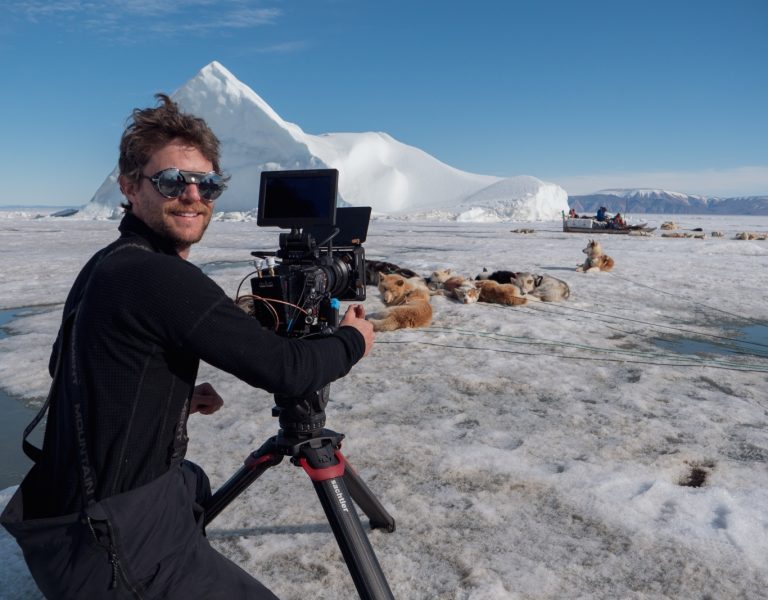CREATURE COMFORTS
Cinematographer Jack Mifflin used the Laowa Ranger Compact Cine Zoom to capture European marmots in the wild.
Images of wild marmots eating biscuits was the spur for award-winning filmmakers Yaz Ellis and Jack Mifflin to produce a short film highlighting the complicated relationship between humans and feeding wildlife.
The pair, who live in Vienna, Austria pitched the concept at Wildscreen and National Geographic’s Wild Pitch in October 2022 where it won a £6,000 prize.
Seven months later, after the marmots had awakened from hibernation, they spent two weeks in the Austrian Alps documenting these cheeky mammals.

They were able to make the film they wanted with the support of Brian Henderson at Wildmotion and Laowa.
“Our goal was to boost the production value using more dynamic imagery rather than being static behind a long lens,” Mifflin explains. “Marmots can spend half the day sat around sleeping, but then they’ll be running, playing, fighting in an instant and we needed equipment with the agility to capture that.”
Marmots on Toast was shot on RED Komodo and V-Raptor. Ellis filmed on longer lenses and Mifflin used a DJI Ronin 3 Pro with Ranger 28-75mm T2.9 Compact Cine Zoom compatible with full frame sensors to go in close.
“Almost every wide in the film was shot on the Laowa Ranger lens, often at F4 to F8 for extra depth of field to embrace the mountain scenery,” he says. “The parfocal was really helpful when I’m running around trying to get different angles of behaviour which may only last 10 seconds. I’m not really having to worry about my focus when changing focal length.”
The extremely close focus distance of 0.49m/1’6″ allowed for captivating close-ups. “You can capture detail in the creature’s eyes you couldn’t on a longer zoom,” he says. “The focus throw is really nice and smooth.

“This lens is also so lightweight (1.4kg/ 3.08lbs) compared to other cine zooms. I’m always conscious about how much we’re carrying. Even though we could drive some way up the mountain we still had to hike to get to the right spot and when you’re running around all day with a gimbal you really notice the weight of your kit.”
Mifflin also commends the build quality of the lens. “I wasn’t worried when filming in snow or rain because the quality feels very solid. If I knock it around it doesn’t feel like it’s going to break. Unlike some other zooms which can wobble when you extend them, the Ranger felt rock steady.”
Marmots may look like cuddly creatures – and the ones on this part of the mountain are habituated – but they are surprisingly violent, a behaviour Mifflin is proud to have caught on film.
“Marmots are territorial animals and will fight and even kill each other or whole family groups. We wanted to show that vicious side not least because it’s more exciting than a marmot eating a carrot. There were moments when they’re waddling away with blood running down their legs.”
The film mixes hard hitting scenes like this with what Mifflin calls “wacky” sequences designed to appeal to the Austrian audience’s taste.

“There’s a sequence where a marmot is fed a chocolate wafer by a hiker which we use to illustrate what happens to the animal. It effectively acts like a drug. The marmot goes on a hallucinatory trip and sees floating wafers. It is very different to what a UK audience expects from a wildlife documentary but it’s a fun way to convey the impact feeding the wrong food can have on these creatures. I haven’t seen that in a wildlife film so we’re really testing the waters.”
Ellis and Mifflin are currently shooting a sequence on fire salamanders for their next documentary using the unique qualities of the Laowa 24mm f/14 2X Macro Probe to capture a bug’s eye view.
“We’re hovering the lens above a salamander as it crawls through the woodland and you can see what it would see. It’s such an immersive lens and being waterproof means you can follow the salamander jumping in and swimming in its element.”
Marmots on Toast is written, filmed and post produced by Dream Wild Films and premiered at the Hollywood Climate Summit in June.

–
Words by: Adrian Pennington
This article is sponsored by Laowa
























